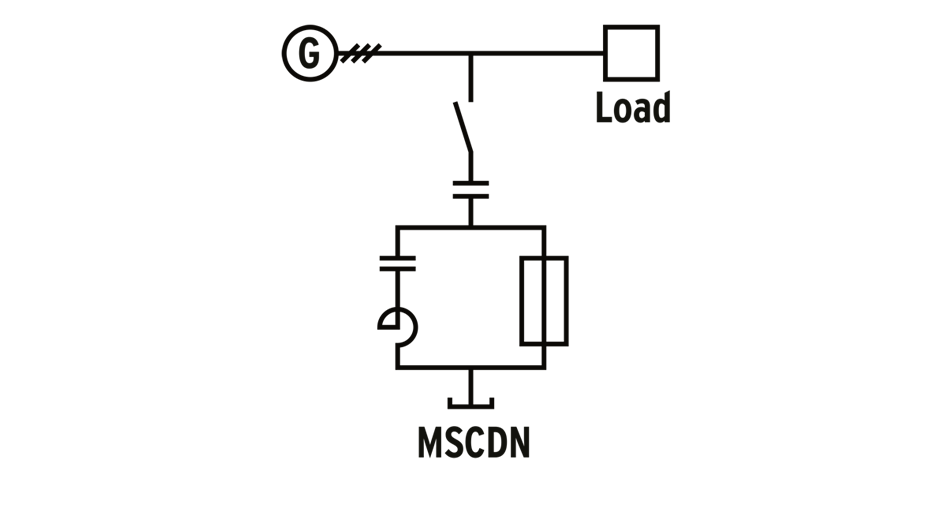Due to the shutdown of fossil and nuclear power plants and the volatile feed-in of renewable energy, grid operation is becoming more susceptible to disruptions. One solution comes from Reinhausen Power Quality and Omexom transformer stations GmbH: MSCDN systems. Particularly at the extra-high and high-voltage levels, transmission system operators are losing an important tool for keeping the voltage in the transmission lines stable: reactive power. It is usually regulated by the generators of large power plants. If these cease to exist, replacements are urgently needed.
-
Impulses
- Impulses overview
-
Transformer manufacturers
- South America's champions of the energy transition
- Traction Transformers – Future on the Rail
- Time of the giants: XXL transformers for more power
- "Reinhausen is ready to deliver!"
- Oversized de-energized tap-changers
- The most powerful transformers in the world for a 1,100 kV HVDC line in China
- "We are in a growth market with the VRDT"
- Digitalization turnaround: GANZ Intelligent Solutions relies on cooperation with MR
- "Transitioning to a solution provider presents a major opportunity for transformer manufacturers – and digitalization can help!"
-
Digitalization
- How AI can lend a hand
- myReinhausen: MR's central digital customer platform
- Why data centers (may) never fail
- Automation? (Cyber-) Secure!
- Globally unique: MESSKO® MTRAB® dehydrating breather communicates via cell phone app
- Remote Solutions: Professional help from a distance
- "Digitalization of the power grids will only work with comprehensive security measures"
- Why are you digitizing your transformers? Three questions for Rúnar Svavar Svavarsson.
- Six challenges, six solutions – Intelligent sensors for safe transformers
-
Energy transition
- The VRDT is the ideal solution to solve voltage problems in our distribution grids
- Making transformers more sustainable
- 940 tons of power regulation
- Sunny prospects: Municipal solar storage devices
- Four reasons why regulated distribution grids are the future
- "The energy transition is taking place in the distribution grids"
- Five theses on the future of power grids
- Storage at all network levels
- Test systems for the energy revolution
- Climate change, energy revolution and the future of power grids?
- A new design for utility poles
-
Wind and solar power
- The North Sea as Europe's green power plant
- Sahara electricity - safe for the island
- Are wind farms the new power plants?
- Direct current at all grid levels
- The MSCDN plant – the new "power plant generator" for stable grids
- Clean power grid with high-frequency filters
- Weatherproof cable testing for offshore wind parks
- VRDTs for Australia's distribution grids
- Lifetime optimization
- Power supply in industry
- Globalization
- Impulses overview
-
Transformer manufacturers
- South America's champions of the energy transition
- Traction Transformers – Future on the Rail
- Time of the giants: XXL transformers for more power
- "Reinhausen is ready to deliver!"
- Oversized de-energized tap-changers
- The most powerful transformers in the world for a 1,100 kV HVDC line in China
- "We are in a growth market with the VRDT"
- Digitalization turnaround: GANZ Intelligent Solutions relies on cooperation with MR
- "Transitioning to a solution provider presents a major opportunity for transformer manufacturers – and digitalization can help!"
-
Digitalization
- How AI can lend a hand
- myReinhausen: MR's central digital customer platform
- Why data centers (may) never fail
- Automation? (Cyber-) Secure!
- Globally unique: MESSKO® MTRAB® dehydrating breather communicates via cell phone app
- Remote Solutions: Professional help from a distance
- "Digitalization of the power grids will only work with comprehensive security measures"
- Why are you digitizing your transformers? Three questions for Rúnar Svavar Svavarsson.
- Six challenges, six solutions – Intelligent sensors for safe transformers
-
Energy transition
- The VRDT is the ideal solution to solve voltage problems in our distribution grids
- Making transformers more sustainable
- 940 tons of power regulation
- Sunny prospects: Municipal solar storage devices
- Four reasons why regulated distribution grids are the future
- "The energy transition is taking place in the distribution grids"
- Five theses on the future of power grids
- Storage at all network levels
- Test systems for the energy revolution
- Climate change, energy revolution and the future of power grids?
- A new design for utility poles
-
Wind and solar power
- The North Sea as Europe's green power plant
- Sahara electricity - safe for the island
- Are wind farms the new power plants?
- Direct current at all grid levels
- The MSCDN plant – the new "power plant generator" for stable grids
- Clean power grid with high-frequency filters
- Weatherproof cable testing for offshore wind parks
- VRDTs for Australia's distribution grids
-
Lifetime optimization
-
Power supply in industry
-
Globalization
Impulses - Portfolio
-
Career
Career
-
Company
Company
The MSCDN plant – the new "power plant generator" for stable grids
The conversion of energy systems to a sustainable power supply requires the use of a wide range of technologies to ensure the stable and secure operation of grids in the future as well. MSCDN plants are a practical solution.
The MSCDN plant – the new "power plant generator" for stable grids
The conversion of energy systems to a sustainable power supply requires the use of a wide range of technologies to ensure the stable and secure operation of grids in the future as well. MSCDN plants are a practical solution.
A new alternative
Reinhausen Power Quality (PQ) has therefore teamed up with Omexom transformer stations GmbH in Germany to offer grid operators an alternative. Together, the two partners have optimized a proven technology that, when placed at the appropriate network nodes, stabilizes the power supply: so-called MSCDN systems. MSCDN stands for Mechanically Switched Capacitor with Damping Network. Such systems consist of a mechanically switched capacitor bank with damping network. Their main task is to provide reactive power for voltage regulation. If more power is drawn from the grid than is produced, because for example hundreds of thousands of people are plugging their cars into charging stations, the grid voltage drops. If more energy is produced because the weather is ideal or consumers just need less, the voltage rises – in both cases this can cause disturbances in the grid.
MSCDN systems improve voltage quality and effectively damp resonances in the grid. The challenge for PQ and Omexom was to optimize the MSCDN system to meet the strict requirements of the four German transmission system operators. After all, the nearly 36,000 kilometers of extra-high voltage lines for which they are responsible form the lifelines of the economy and society. PQ and Omexom have therefore conducted extensive studies and simulations – also taking into account future grid expansion scenarios. After all, several thousand kilometers will be added to the transmission grid in the coming years.

„Without technologies that stabilize our grids, critical situations would be an everyday occurrence in the future.“
Thomas Brückner, Reinhausen Power Quality
GRIDCON® MSCDN
GRIDCON® MSCDN
The system has a compact design. It is designed as a C-type filter circuit with split capacitances and damping resistance. In addition, reactors are used, which are designed to be efficient that they only generate low losses. The system can be phase-selectively activated via a special circuit breaker. At high load, it provides capacitive reactive power; at low load, it protects against overvoltage – which is already sufficient in many situations. Complex dynamic systems such as the STATCOM (power converter) as well as static reactive power compensators (SVC) are used for stepless control.
This is how an MSCDN system works: At high load, capacitive reactive power is provided to support the voltage. At low loads, the voltage-dependent connection and disconnection of the compensation system protects against overvoltages.
Integration of renewable energies
Reinhausen Power Quality offers customized system solutions for the provision and supply of reactive power in high and medium voltage grids to enable future-oriented integration of renewable energies. GRIDCON® MSCDN systems are an essential component for the provision of static reactive power and resonance damping and are used for staged reactive power and voltage control.

We are here for you. Wherever you are.
Looking for the right contact partner?
Do you have a concern, but don't know whom you should contact? You will find that information in our contact overview. In the event of any technical disturbances, our 24/7 support is always at your disposal.
Welcome to myReinhausen
myReinhausen is MR's central, digital customer platform. On myReinhausen, customers can access customer-specific MR information as well as numerous free features related to the MR portfolio.
myReinhausenJoin Reinhausen family
Find your ideal job quickly!
Check our vacancies here. Apply today and contribute at the world market leader in energy technology keeping the energy supply stable in the future.

